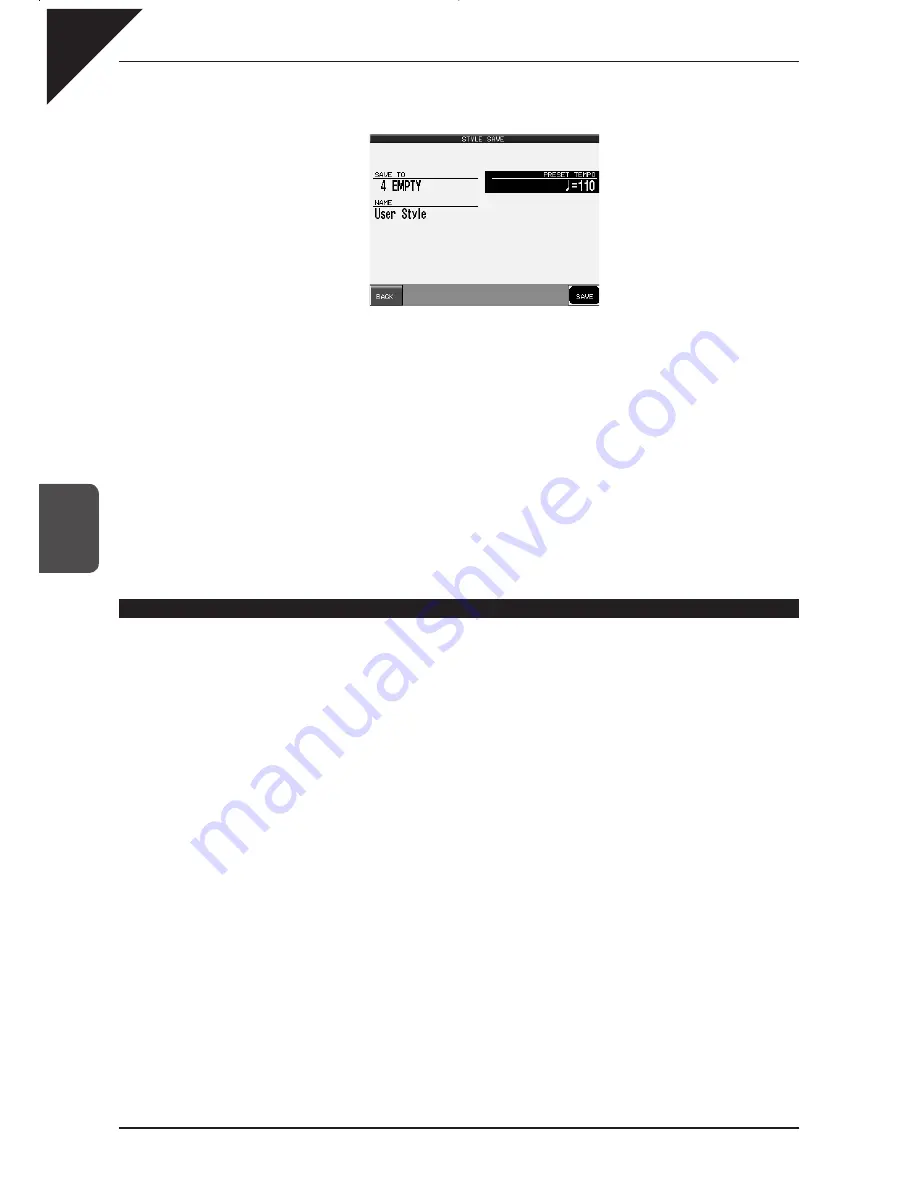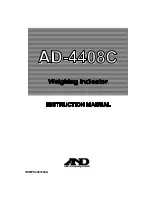
Page
86
5
Using a Style
Step 10
Touch PRESET TEMPO, then use the dial to set the default tempo for the new Style.
SAVE TO : The location to which the new Style
will be saved.
NAME : The name of the new Style.
Preset Tempo : The tempo that is set automatically
when the new style is selected.
BACK : Takes you to the previous menu.
SAVE : Saves the style to User Style.
Step 11
Touch SAVE TO, then use the Dial to select the location to save your new Style.
Step 12
Touch NAME, then use the virtual keyboard to enter a name for the new Style.
Step 13
Touch the SAVE button
The new Style will be saved to the CP’s internal memory.
Auto-accompaniment System
The Concert Performer Auto-Accompaniment System (ACC) analyzes your playing and adjusts the note data
recorded in the different Phrases in a pattern to match the root key and chord type you are playing. The ACC
System also shifts the octave for each phrase to keep each section playing within its musically useful range. To get
the most out of this System, any new Style you create can benefit from some fine tuning of these settings.
When you touch the MORE button on the Style Maker Record screen, the Style Maker Detail Settings screen will
be displayed.
Accompaniment Type (ACC Type)
This setting determines how Phrases being played by a particular section in a pattern will be analyzed by the Auto-
accompaniment (ACC) System. There are Two Accompaniment Types: Chordal and Scalic (melodic). Chordal Phrases
usually consist of block chords or arppegiated chords. You should set this kind Phrase to Chordal. Scalic Phrases usually
play melodic phrases that serve to add interest to the style as well as provide counter melodies and riffs. Melodic Phrases
or Phrases that contain chromatic passages should be set to Scalic. Scalic Phrases can also contain chords but they
will be analyzed differently than chords in a Chordal Phrase. The Bass section is automatically set to Scalic since it will
rarely if ever play chords.
The terms Open and Close apply to Chordal Phrases, and refer to how the CP will regulate the voicing of a Chordal
Phrase. Setting a Section to Open will allow for open-voiced chords, which might be good for guitar and string sounds.
Setting a Section to Close maintains closed voiced chords, which are better suited to piano parts and other chording or
comping instruments.
Range
This determines the chord inversions that a Chordal Phrase will play.
The term “range” here has nothing to do with the span of actual chord notes. It selects which note in the chord will serve
as the basis of the chord inversion.
HI is the initial setting and is recommended as a starting point. MID plays an inversion based on the next lower note in
relation to HI, while LO plays an inversion based two-notes lower.
Summary of Contents for Concert Performer CP139
Page 1: ...1 OVERVIEW OF CONTROLS 2 SOUNDS 3 STYLES 4 RECORDER 5 USB USAGE Quick Start Guide ...
Page 2: ......
Page 38: ...Page 38 USER NOTES ...
Page 39: ...Page 39 ...
Page 42: ...All descriptions and specifications in this manual are subject to change without notice ...
Page 217: ...Page 177 11 Appendices User Notes ...
Page 218: ......
Page 219: ......
















































